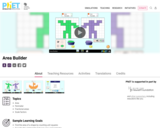
Let's look at some cultural norms and travel tips when visiting Egypt.
- Subject:
- Humanities
- Material Type:
- Lesson Plan
- Author:
- GiGi Badawi
- Date Added:
- 04/12/2019

Let's look at some cultural norms and travel tips when visiting Egypt.

Students will read a passage about Sarah and Thomas and underline any use of technology in the passage. They will then write “AP” for appropriate or “IN” for inappropriate above any use of technology.5.9 The student will evaluate and solve problems that relate to inappropriate use of computing devices and networks.

Students will brainstorm and identify problems that arise from inappropriate use of computing devices and networks by working in pairs or groups. They will recognize the importance of using technology responsibly and safely.

Investigating arcs and areas Mathematics Instructional Plans (MIPs) help teachers align instruction with the 2016 Mathematics Standards of Learning (SOL) by providing examples of how the knowledge, skills and processes found in the SOL and curriculum framework can be presented to students in the classroom.

Help students learn about archaeological methods and how archaeological interpretations are made. It is organized around questions that include: What is archeology? What do archaeologists do? How do archaeologists determine how old things are?

Architectural and Structural Engineering provides learning opportunities for students interested in preparing for careers in such areas as architecture, industrial design, and civil engineering.

Students will examine the use of the elements of art, including line, shape, form, texture, and color, in a drawing. They will also study the elements of architecture and learn to identify architectural elements in detail and their relationship to the surrounding landscape. Then students will draw an ancient Roman temple in perspective, integrating architectural elements in the drawing.

In this middle school and high school unit, students engage with 360�� virtual reality tours, authentic Arctic datasets, and app-based labs to construct models and explanations for the unit driving question, "Why might the Arctic be warming twice as fast as the rest of the world?"

In this lesson, students investigate whether other parts of the world are changing and getting hotter just like Colorado.

This lesson is a remix from Illustrative Mathematics. It focuses on right triangles. It can include acute and obtuse triangles in the lesson. Extensions of the lesson allow students to combine triangles to make other polygons.https://goopenva.org/courses/4-g-are-these-right

Students will investigate and explore facets of election security, both physical and digital security, in pairs to create PSAs their classmates can listen to. Students will be asked to think critically about why data security is necessary, making connections between their day-to-day needs and maintaining the fundamental bedrock of American democracy: the right to vote.

Students participate in a measurement lesson focusing on length. They use their feet as the unit of measurement for furniture in the classroom and at home. They then sketch the pieces of furniture they measured.

Create your own shapes using colorful blocks and explore the relationship between perimeter and area. Compare the area and perimeter of two shapes side-by-side. Challenge yourself in the game screen to build shapes or find the area of funky figures. Try to collect lots of stars!

Build rectangles of various sizes and relate multiplication to area. Discover new strategies for multiplying algebraic expressions. Use the game screen to test your multiplication and factoring skills!

Build rectangles of various sizes and relate multiplication to area. Partition a rectangle into two areas to discover the distributive property.

Build rectangles of various sizes and relate multiplication to area. Discover new strategies for multiplying large numbers. Use the game screen to test your problem solving strategies!

This is a slides lesson on Area & Perimeter of squares and rectangles. Students will use formula sheet to find the area and perimeter of squares and rectangles.

Create your own shapes using colorful blocks and explore the relationship between perimeter and area. Compare the area and perimeter of two shapes side-by-side. Challenge yourself in the game screen to build shapes or find the area of funky figures. The PDF from VDOE was added to create an activity which reviews area and perimeter of triangles and rectangles on paper prior to delving into the fun, interactive activity.

This lesson is on Jamboard. Students will use Desmos calculator to compute the area of the triangles. Students will also use the formula sheet to use the formula for the problems.

The purpose of this task is primarily assessment-oriented, asking students to demonstrate knowledge of how to determine the congruency of triangles.